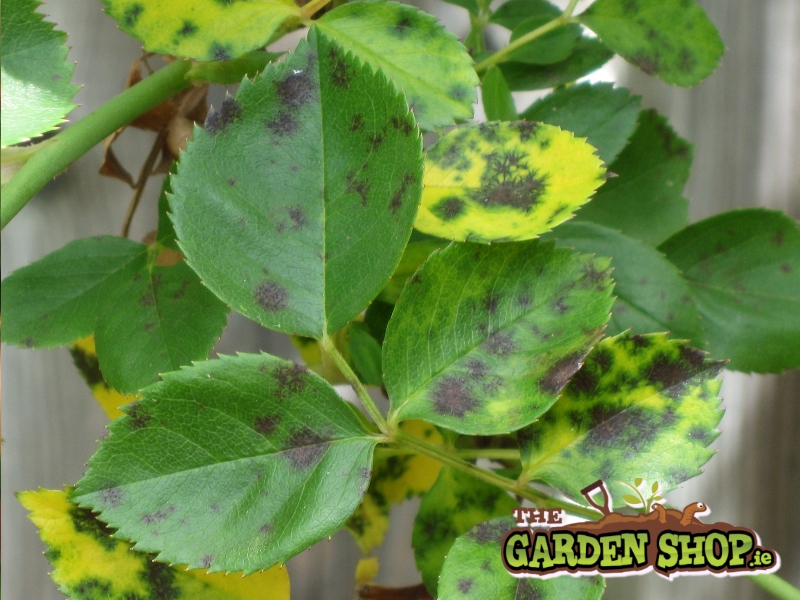Black Spot on Roses
This is a disease known as Diplocarpon Rosae which is a fungus that attacks Roses. This is the most common disease that affects rose plants and if roses are not treated each year then black spot will develop on the plant’s leaves. There are very few Roses that show any resistance to black spot.

How to Recognise Black Spot
First dark-brown spots appear on leaves, this is then followed by leaves turning yellow & then leaves fall off. The impact of this will lead to reduced plant vigour & reduction in growth & number of blooms especially on younger plants.
The Life-Cycle of Black Spot
Asexual Spores are produced in warm & damp conditions. These spores can spread in rain water or irrigation water & infect other plants.
Luckily Diplocarpon Rosae cannot overwinter & therefore spread of the disease can be controlled with careful management in Autumn. It is therefore essential to remove any fallen & infected leaves in Autumn to prevent the spread of spores into the following year.
Cultural Control
Ways to reduce the effect of blackspot include the following practices...
- Water roses in the mornings
- Avoid watering the foliage, water from beneath
- Ensure good air circulation between plants
- Remove fallen leaves in Autumn
- Mulch up around the base of plants
- Look out for resistant varieties
Chemical Control
- Triticonazole & Acetamiprid - Apply Rose Clear every 4 weeks from April to September
- Any systematic fungicide with Myclobutanil is also effective in controlling black spot
- For nursery production & professional use, Captan is the method of choice
All of the above chemicals are for preventative care. These chemicals will not cure or remove black spot if it has already infected roses. Therefore regular application over the Summer months is essential to ensure healthy rose plants.






